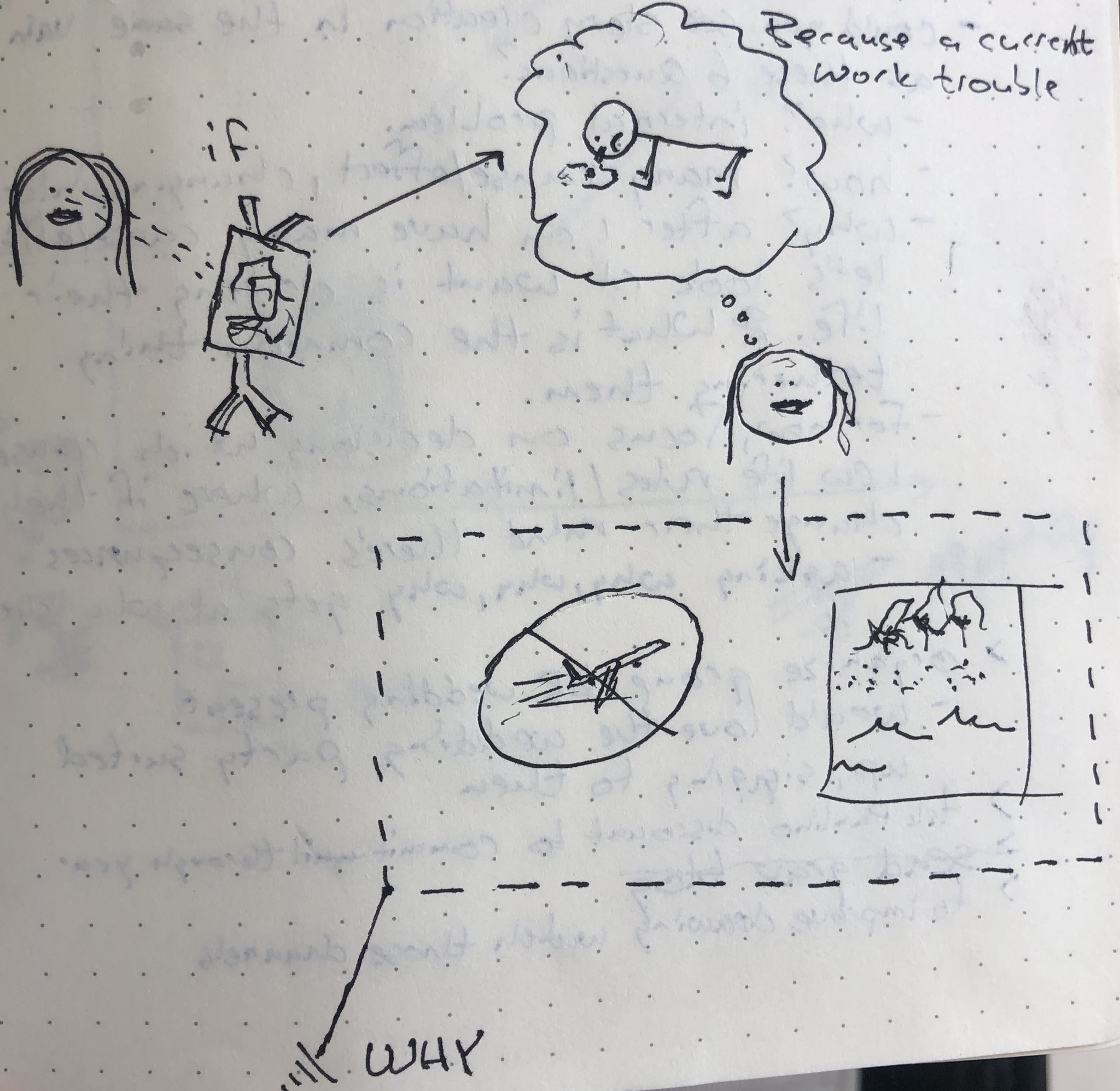Manuscript Example: life purpose | before and after the realization
Before I fall off the deep end, I want to include a concrete example. Here’s the scene sketch I had submitted in a manuscript before I learned about a character’s life purpose. Afterwards, I’ll update it with this new knowledge in mind.
Scene idea: What if Em (female lead character) brings Josh (male lead character) to a painting class; at first Josh is hesitant to go because he paints too much like a robot and doesn’t want Em to see that. Nevertheless, he attends the class. Unexpectedly the opposite happens. Too much of his insides end up on the canvas and he feels vulnerable.
I expanded on this:
He goes to the class and to start he’s rigid, drawing perfect lines. The teacher pacing around sees Josh, stops, and asks if he will try an exercise. “Close your eyes,” he says. Imagine you’re back in first grade, painting. The teacher goes describing a visualization, then says open your eyes and just go. Josh puts the brush down, scoops up a blob of paint with his fingers and just goes. Feeling the paint slide between his fingers, he gets lost in the art, spending the next hour in a state of play. When they’re done, he and Em show each other. Em says something like omg, this might be the first time I truly understand you (or see inside you). [Not so literal but something along those lines.] Josh instantly feels vulnerable and never does that again. Learns that playing like that without control is dangerous.
Right there I stopped my work on this sketch. I thought, okay, this is a scene caused by his internal problem, the fear of emotions and the feeling vulnerable, and he learns to protect himself. From now on he’ll be careful with creative work. And I thought this has an external cause because Josh going forward no longer will take artistic risks. The scene-sketch felt complete. And I stopped there.
Now, it’s clear to me this isn’t tethered to anything of importance in Josh’s life. It’s a one-off, a scene that just floats away, never to be remembered again. A scene that I could forever forget about without consequences to Josh’s story. The story he sees from his deathbed is the exact same.
How to add consequences?
Starting with life purpose: let’s say, Josh has a life’s mission to become a polyglot, speaking 7 languages. Currently, he’s only working to earn money for the next trip.
And let’s say, recently he and Em started discussing to take their next three-month trip. One of the worries that Em keeps bringing up is about losing their jobs since that happened after their first trip. She wants to ensure they make a responsible decision.
Now, this art scene happens. And Em sees Josh’s insides. And Josh believes that she’ll read into it that he’s a mess and that he’s not in a good place to go on this trip. And later that night, they discuss travel again. Josh brings it up. Em says she doesn’t want to leave her job. Josh misreads her meaning, believes she won’t travel. He’s scared they won’t go. He feels like a mess. So, to not feel that way, he gets angry, he yells, he demands they go. He books his ticket in rage. Em leaves him. He goes alone.
Now, that has a huge external cause/effect. That he certainly will see on his deathbed. And that resentment or that need to feel put together will carry through and affect more of his decisions. That just doesn’t float away.
* * *
To arrive at the above, I actually sketched a doodle out to guide me. Imagining how this scene could affect Josh’s overarching desires in life — here’s the image I saw:

Just something I’ve been as of late childishly playing around with.